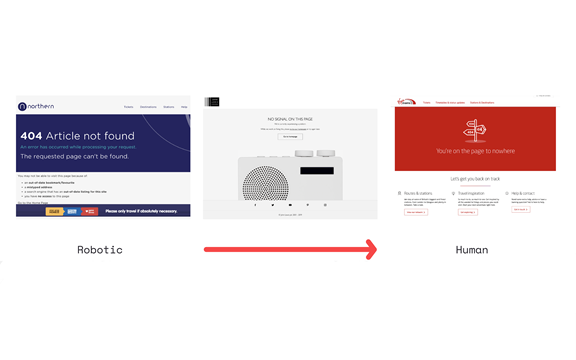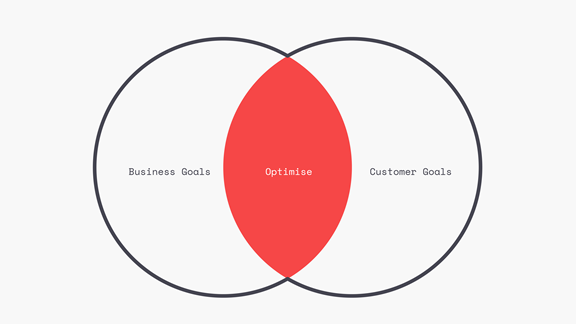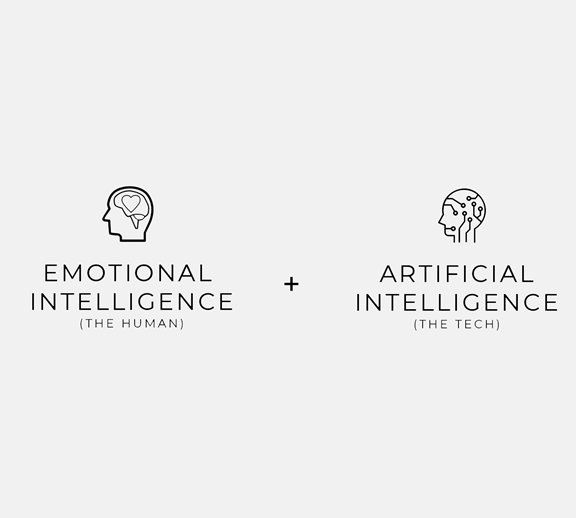If the current crisis teaches us anything, it’s that we’re all human. We’re all vulnerable, none of us quite know what’s going to happen next and we all want answers. Although we have all been briefed with a collective objective ‘stay at home’ we are all dealing with it in our own unique ways.
That’s why it’s crucial that we all change our mindset when it comes to the way we approach customers on our digital platforms. It’s time to stop thinking of visitors as potential customers and deal with them like human beings.

Think human not customer
The current issue
Too often we get caught up in data and forget there are actual individuals underneath the numbers (and this is coming from the data guy!). This is particularly true for owned channels where quantitative data (the numbers) determines success or failure and qualitative data (what the customers think) is in most cases a lowly second.
What this leads to is digital marketing that is quite literally a numbers game with little consideration for how you actually engage with personality and emotional intelligence.
Here’s three issues that really exemplify this point.
1.) Failing to think in context
For a perfect encapsulation of where any brand is with emotional intelligence just generate an error page on their site by adding /cx-test/ to any website domain i.e. www.example.com/cx-test/. This will 9 times out of 10 generate an error page. The question is, what does that error page say? Is it an IT response, a marketing response or an empathetic response?


2.) Predefined journeys
Companies push content and journeys that favour the business rather than the customer. We need to avoid the concept of linear funnels that users should follow (if they weren’t just so stubborn!) and think about utility - how are we helping our visitors? That is the new paradigm to consider, akin to Zappos who are famed for customer service first and selling footwear second. If I had my way ‘How can we help?’ would be pride of place on every homepage!
3.) New vs existing customers
Following on from the second point, companies often hold a bias towards new customers rather than existing customers. It costs 6-7x more to acquire a new customer than to keep one, so why is it that 90% of all content on a website is generally focused towards new customers? It may fit the objectives of some within the organisation but this may be at odds with what customers want. In our research during the Coronavirus pandemic, many high profile brands devoted 75% or more of their guidance towards new customers.

People have emotional needs. If your digital channels don’t address them then you won’t connect. In the current situation, keep things simple, build a relationship by actively asking how you can help.
Paul Carysforth Head of Data Intelligence
To drive a change in your business we have 3 principles you should follow:

Adopt a human mindset
Customers are people who have transactions with your business. They have a functional need for something and want lifetime value from their brand. Humans are people you have relationships with. They have emotional needs and want to be treated as individuals. They crave simpler experiences that make their lives easier. At a time when people are anxious and need reassurance, does your platform address those needs? Can they get information quickly and feel like someone is listening to their concerns?
Identify moments to own
The key to human CX is to combine emotional intelligence with artificial intelligence. Your CX should offer moments that make people realise they’re dealing with someone who understands them and their needs. Make journeys clear and understandable. Make your messaging softer and emotional. If your content sounds like it was written by a machine then change it. Treat visitors to your site like welcome guests in your home. If something goes wrong then ensure you have a way of capturing that through a voice of customer tool like Usabilla. Thank the customer for being there and reassure them that everything’s in hand. Keep it simple and hassle free. These are the moments that will remove the stress people feel and give them confidence in your brand.


Measure what matters
Of course, knowing what to change to be more human requires measurement. You need to identify the points in the journey that really matter – not just those that involve your business and the money it makes. What really matters is those moments when your user wants to achieve something - find some information, buy a health item or learn about your opening hours. Think moments not transactions. If you make this simple and memorable then your digital platform will drive true value. Identify these key moments (signature moment) then measure the data around them.
Never stop improving
In an ever changing situation you need to keep optimising your platform to ensure it’s still delivering human moments that matter. Measure and improve then repeat again. Being human means always striving to be better. In the current situation it’s all we can do to help everyone.